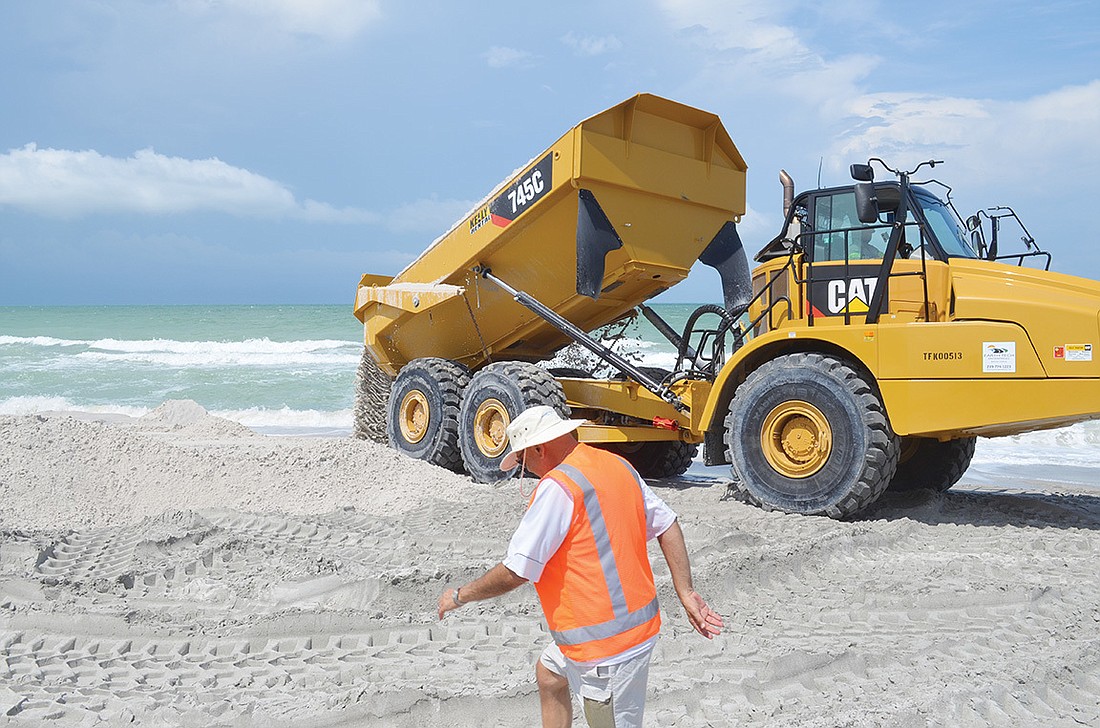- April 27, 2024
-
-
Loading

Loading

The Gulf Coast beaches: What a mess.
We’re not talking about the aftermath of Tropical Storm Hermine. We’re referring to the maddening, expensive, time-consuming and excruciatingly bureaucratic ordeals that every Gulf Coast beach community must endure to obtain permits from federal and state agencies to renourish and maintain their beaches.
Check out the following two cases:
The town of Longboat Key waited (and endured) three years from the time it filed federal and state applications for permits to the day dredg-ing actually began in New Pass to replenish sand in front of the beach-less, property-threatened Inn on the Beach and L’Ambiance and Pierre condominiums on the southern tip of the Key. Three years.
Had that process taken what it should have, those properties would not have been exposed and dangerously threatened as they were. What’s more, the dredging of New Pass and renourishing of the beach would have been completed long before Tropical Storm Hermine wiped away all that was done in the past two weeks.
Surely, we’re all aware of the battle raging over whether sand can be extracted from Big Pass to renourish Lido Beach.
Guess how long this process has been going on?
U.S. Army Corps of Engineers Project Manager Milan Mora first publicly presented plans for the project in 2013.
But the project actually started crawling through the government bureaucracy long before that. According to the Sarasota Observer in 2013:
“To receive congressional approval [for the renourishing of Lido Beach], the Army Corps of Engineers justified to Congress that the project was financially prudent and environmentally sound. Mora said the project was initially authorized in 1999, and a congressionally authorized feasibility study was completed in 2004.”
When Mora presented the project to the public in 2013, he said he expected permits to be granted and sand moved in 2015, depending on funding from Congress.
Here it is, Sept. 8, 2016: no permits. Not to mention fervent opposition from Siesta Key residents and Sarasota County to do whatever they can to delay and block the Corps from dredging Big Pass.
These are just two examples of what repeatedly occurs all along the Gulf Coast coastline. If you talk to public works and higher officials in this region about the permitting process of beach renourishment, they will tell you — in our words — it’s ridiculous.
Consider the coastline from Anna Maria down to Boca Grande. That’s 70 miles of beachfront — all of it constantly being eroded and needing major renourishments. And we know, historically, these renourishments typically are needed at least every five to seven years. You can set your calendar to them. Sometimes they are more frequent, when the Hermines and Charleys come blowing through the coastlines.
But each time any municipality or county government attempts routine beach maintenance, the permitting process is interminable. The cause of the delays: primarily the U.S. Fish and Wildlife Service. As one official told us: First, the feds were all about the turtles. Now they hold up the permits for the shoreline birds.
When the local municipalities press the Fish and Wildlife chieftains on why the review process takes so long, the answers are standard government issue: Blame someone else, don’t take responsibility. The Fish and Wildlife officials say Congress isn’t funding enough employees to handle the work load.
There must be a better way. And there is a better way. When you consider the millions upon millions of taxpayer dollars invested in beach maintenance along the entire Gulf Coast (not to mention nationwide), and the frequency with which these projects occur, the permitting process can and should be efficient and the least of the expense.
We have advocated before and will continue to advocate that this issue is so crucial and expensive (property and taxpayer money are at risk) to this region that the congressional representatives for this side of the state; state senators and representatives; officials from the governor’s office and federal and state permitting agencies; and representatives of the affected communities need to conduct a summit that brings an end to this costly, wasteful and frustrating process.